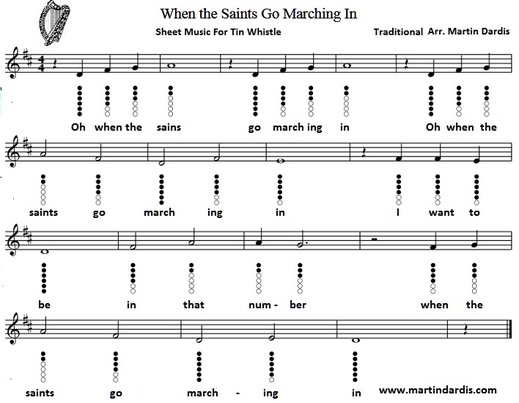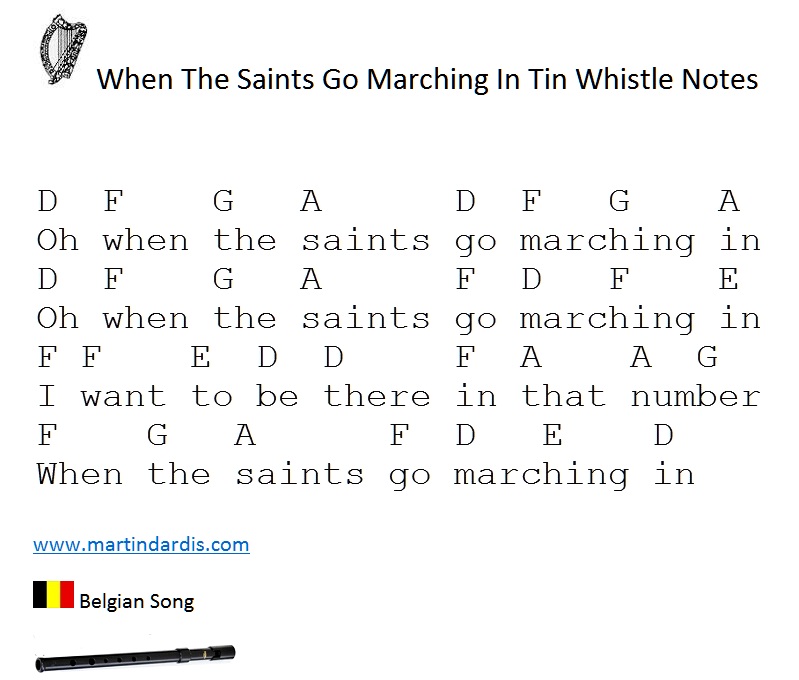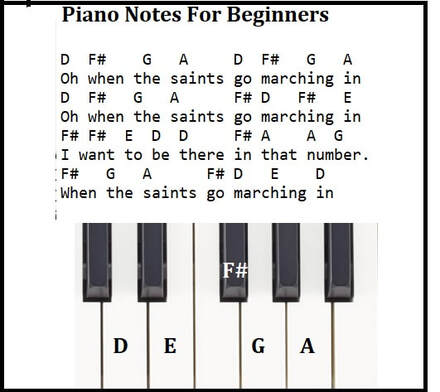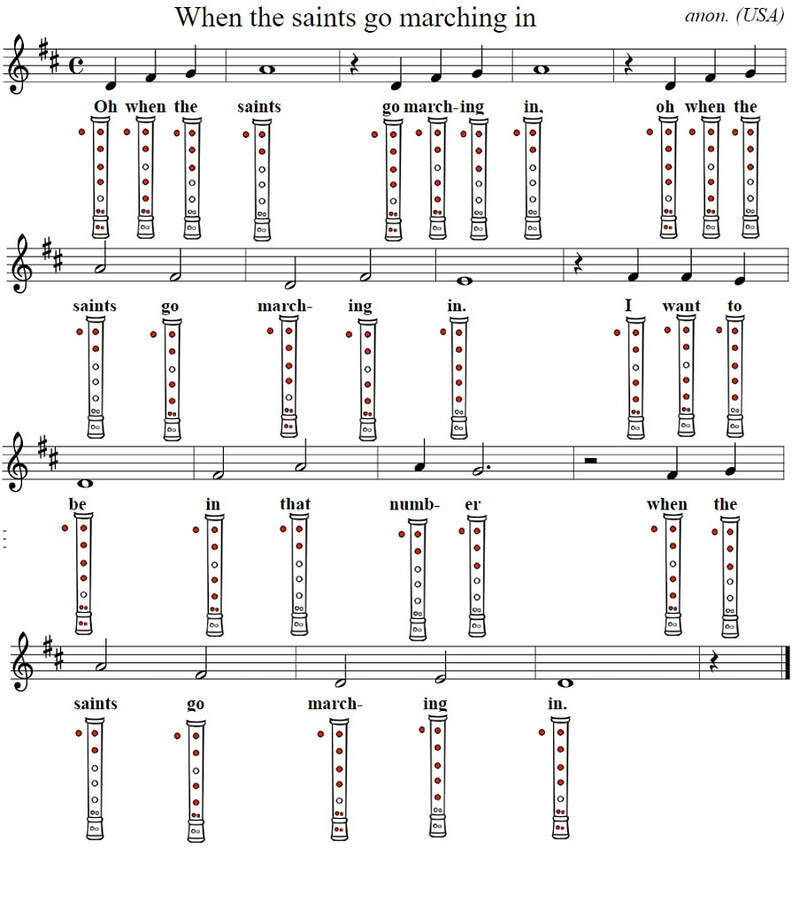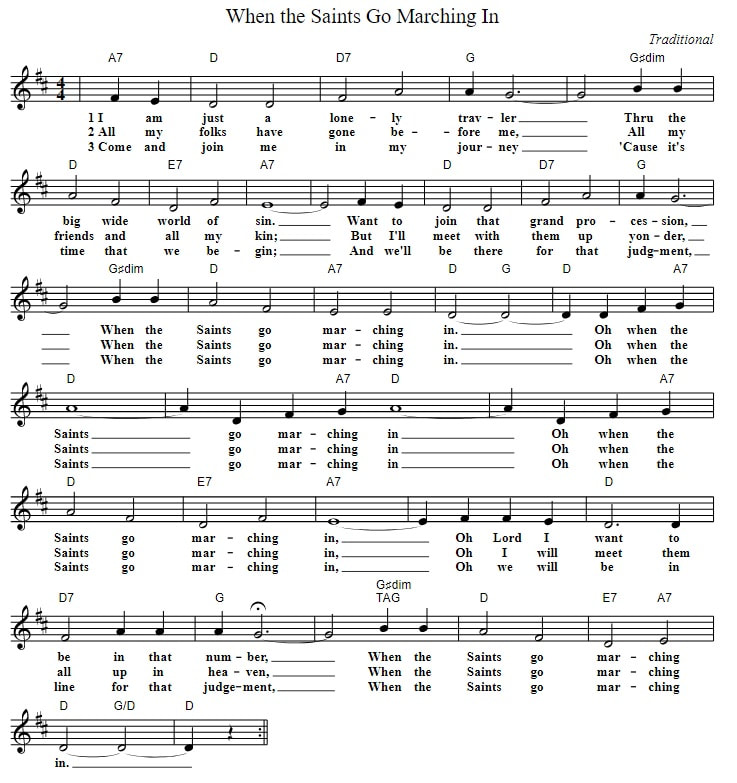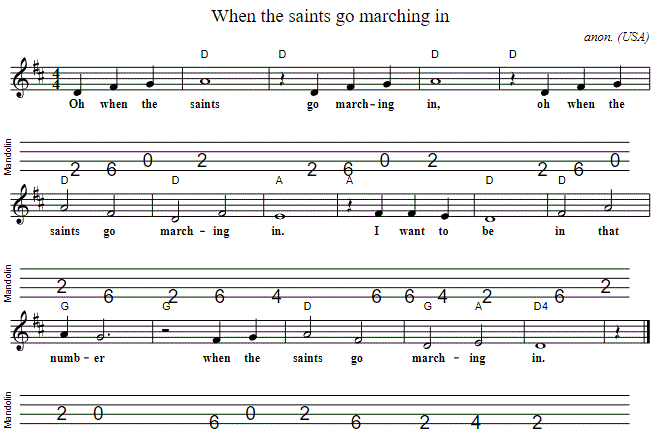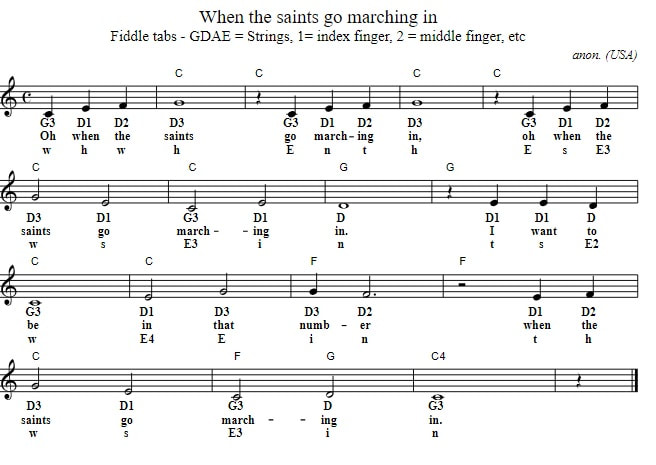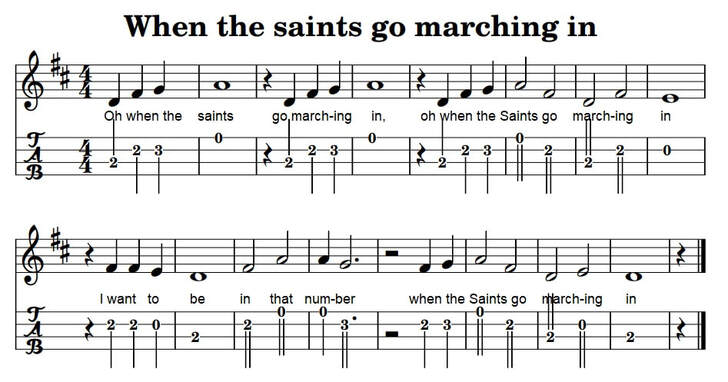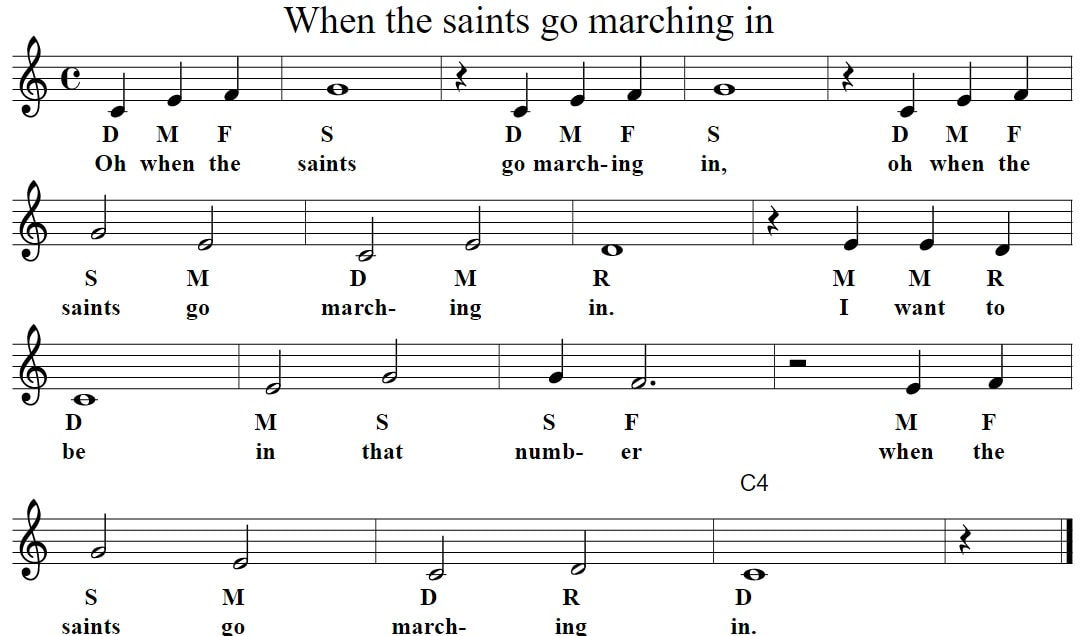When The Saints Go Marching In Tin Whistle Music Notes
When the saints go marching in violin and recorder sheet music for beginners now added which shows which fingers to use on each string when playing the notes. This tune was recently recorded by André When the saints go marching in easy beginner piano keyboard or melodica notes now added. viola and cello sheet music in G Major now included. It's a very easy song to play on whistle, I'm playing in the key of D on this one in the youtube tutorial video, and that's the key the sheet music is in. Just follow what I'm playing and you'll have it in no time. If your only starting to play the whistle there are several more handy one's on the site including Children's Songs On Tin Whistle By placing the letter notes over the words I hope to encourage more people of all ages to take up playing the whistle once you see how easy it can be, well this one is anyway. The letter notes are included for those learning the recorder or flute. I know I put the like to this song in the kids section of the site, but it's not really a kids song at all. It's just that it's a song that was learned from a teacher because it was fairly easy to play and I also included it in The Tin Whistle Book here on my site. Sheet music notes when the saints go marching in in G Major, in solfege, do re mi format now included plus the tenor guitar / mandola tab in the tuning of CGDA. When the Saints go marching in ukulele tab in Low G tuning now included.
The song 'When The Saints Go Marching In' has been a staple in American culture for decades, with its origins tracing back to the early 1900s. With its catchy melody and uplifting lyrics, this song has become a symbol of hope, perseverance, and faith for many people. It has been covered by numerous artists and has been adapted into various genres, making it a timeless classic.
The origins of 'When The Saints Go Marching In' can be traced back to the African American community in New Orleans in the early 1900s. It is believed that the song was a combination of two spirituals, 'When the Saints are Marching In' and 'The Judgment Day.' These spirituals were often sung in churches and during funeral processions, and they reflected the struggles and hopes of the African American community during that time. The lyrics of the song were simple yet powerful, with phrases like 'when the saints go marching in' and 'oh how I want to be in that number' evoking a sense of longing for a better life.
In the 1920s, the song gained popularity among jazz musicians in New Orleans, who added their own improvisations and created a more upbeat and lively version of the song. It was during this time that the song became associated with the city's famous jazz funerals, where the mourners would parade through the streets, celebrating the life of the deceased with music and dancing. The song's message of hope and salvation resonated with the African American community, who saw it as a way to honor their loved ones and celebrate their faith.
As jazz music spread across the United States, 'When The Saints Go Marching In' gained popularity among white musicians as well. In 1938, Louis Armstrong recorded his iconic version of the song, which became a massive hit and cemented the song's place in American culture. Armstrong's energetic trumpet playing and soulful vocals brought a new life to the song, and it became a symbol of the New Orleans jazz scene.
Over the years, 'When The Saints Go Marching In' has been covered by countless artists from various genres, including blues, rock, and gospel. Each artist has added their own unique style, making the song versatile and adaptable to different musical tastes. The song has also been used in movies, TV shows, and commercials, further solidifying its place in popular culture.
Aside from its musical influence, 'When The Saints Go Marching In' has also played a significant role in social and political movements. During the Civil Rights Movement in the 1960s, the song was often sung during protests and marches, with its lyrics serving as a rallying cry for equality and justice. It became an anthem for the movement, representing the hope and determination of the African American community in their fight for civil rights.
Today, 'When The Saints Go Marching In' continues to hold a special place in American culture. Its message of hope and salvation still resonates with people from all walks of life, and its popularity shows no signs of waning. The song has become a symbol of resilience and faith, reminding us that no matter what challenges we face, there is always hope for a better tomorrow.
In conclusion, 'When The Saints Go Marching In' is more than just a song. It is a powerful expression of the human spirit, reflecting the struggles and hopes of a community and serving as a source of inspiration for generations. Its ability to transcend time, cultural barriers, and musical genres is a testament to the song's enduring impact. As long as there are people in need of hope and faith, 'When The Saints Go Marching In' will continue to be a source of comfort and strength.
The origins of 'When The Saints Go Marching In' can be traced back to the African American community in New Orleans in the early 1900s. It is believed that the song was a combination of two spirituals, 'When the Saints are Marching In' and 'The Judgment Day.' These spirituals were often sung in churches and during funeral processions, and they reflected the struggles and hopes of the African American community during that time. The lyrics of the song were simple yet powerful, with phrases like 'when the saints go marching in' and 'oh how I want to be in that number' evoking a sense of longing for a better life.
In the 1920s, the song gained popularity among jazz musicians in New Orleans, who added their own improvisations and created a more upbeat and lively version of the song. It was during this time that the song became associated with the city's famous jazz funerals, where the mourners would parade through the streets, celebrating the life of the deceased with music and dancing. The song's message of hope and salvation resonated with the African American community, who saw it as a way to honor their loved ones and celebrate their faith.
As jazz music spread across the United States, 'When The Saints Go Marching In' gained popularity among white musicians as well. In 1938, Louis Armstrong recorded his iconic version of the song, which became a massive hit and cemented the song's place in American culture. Armstrong's energetic trumpet playing and soulful vocals brought a new life to the song, and it became a symbol of the New Orleans jazz scene.
Over the years, 'When The Saints Go Marching In' has been covered by countless artists from various genres, including blues, rock, and gospel. Each artist has added their own unique style, making the song versatile and adaptable to different musical tastes. The song has also been used in movies, TV shows, and commercials, further solidifying its place in popular culture.
Aside from its musical influence, 'When The Saints Go Marching In' has also played a significant role in social and political movements. During the Civil Rights Movement in the 1960s, the song was often sung during protests and marches, with its lyrics serving as a rallying cry for equality and justice. It became an anthem for the movement, representing the hope and determination of the African American community in their fight for civil rights.
Today, 'When The Saints Go Marching In' continues to hold a special place in American culture. Its message of hope and salvation still resonates with people from all walks of life, and its popularity shows no signs of waning. The song has become a symbol of resilience and faith, reminding us that no matter what challenges we face, there is always hope for a better tomorrow.
In conclusion, 'When The Saints Go Marching In' is more than just a song. It is a powerful expression of the human spirit, reflecting the struggles and hopes of a community and serving as a source of inspiration for generations. Its ability to transcend time, cultural barriers, and musical genres is a testament to the song's enduring impact. As long as there are people in need of hope and faith, 'When The Saints Go Marching In' will continue to be a source of comfort and strength.
Below is the list of sheet music and tin whistle songs that are in my ebooks. This is the largest collection of tin whistle songs ever put together.[over 800 songs ] Including folk, pop and trad tunes plus German And French songs along with Christmas Carols.
All of the sheet music tabs have been made as easy to play as was possible.
The price of the ebooks is €7.50
All of the sheet music tabs have been made as easy to play as was possible.
The price of the ebooks is €7.50
When the saints go marching in beginner piano keyboard / melodica notes
When the Saints go marching in recorder notes finger chart for beginners
Below is the tenor guitar / mandola tab in CGDA
Below is the violin notes for beginners.
When the Saints go marching in ukulele tab in Low G tuning
Piano Sheet music notes when the saints go marching in in G Major, do re mi solfege format.
Cello sheet music for when the saints go marching in
Viola sheet music in G Major when the saints go marching in
